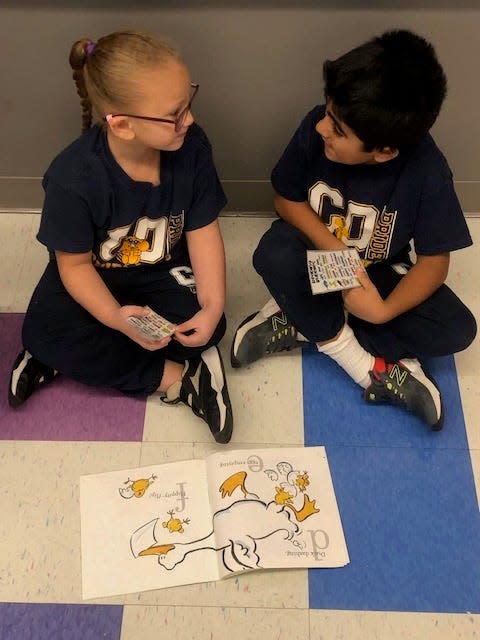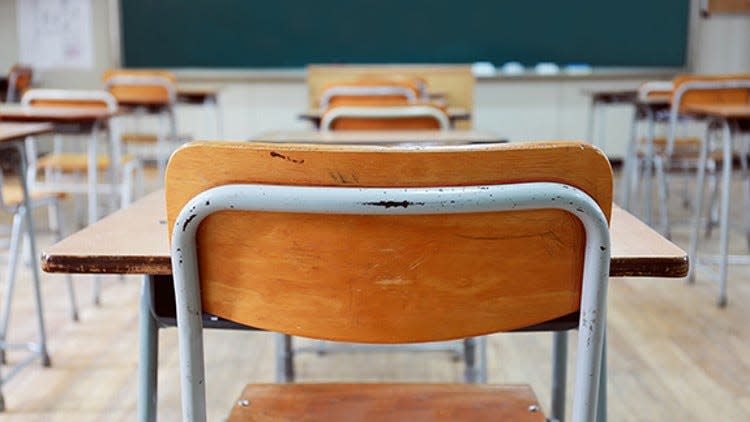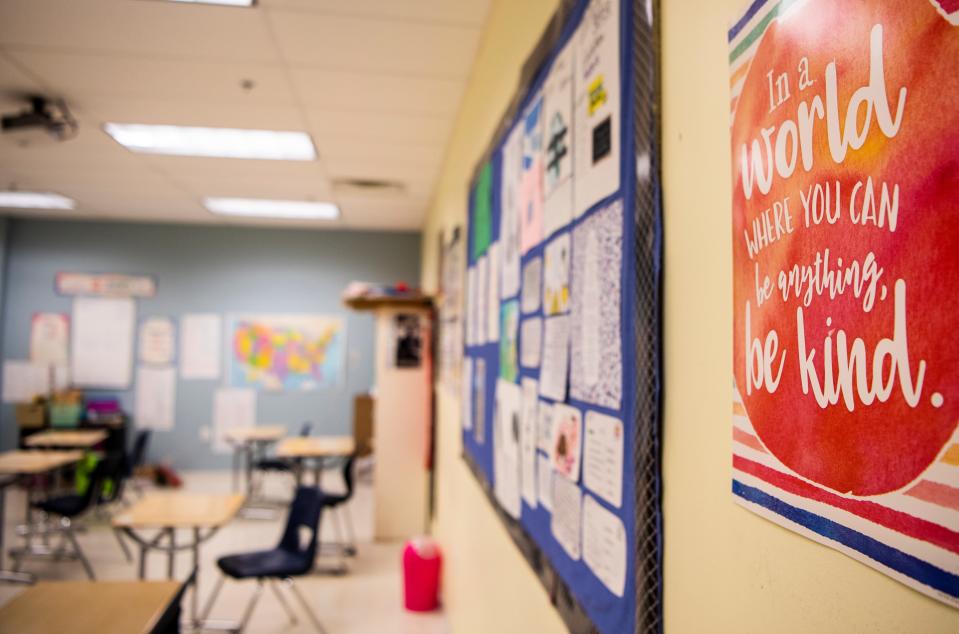Do culture war debates in NJ schools matter when kids can't read or do math? — Kelly
America’s public education system is about to face a major crisis.
But this problem does not involve such culture war issues as banned books or transgender bathrooms. This is about something far more basic.
Far too many elementary school students can’t read or solve basic math equations.
An extensive study released earlier this week documents what we’ve long suspected — that scheduling upheavals in schools from the COVID-19 pandemic have impeded the intellectual progress of a generation of public school students.
How bad is it?
The report by the educational research group, NWEA, which studied test scores of some 3.5 million elementary school students, concludes that the “the average student will need the equivalent of 4.1 additional months of schooling to catch up in reading and 4.5 months in math.”

In practical terms, schools will have to provide at least an extra semester of classes in reading and math for most students to reach the level where they should be in their respective grade. That’s in addition to their regular classroom time.
By the way, that’s what the “average” student will need. Students who are more challenged will require even more help to keep pace. Or as the report said: “Marginalized students remain the furthest from recovery.”
This columnist argued last year that COVID may have cost America a generation of students. Now, sadly, that seems to be the case. Think of this as a whole generation of students flunking their grade levels and needing massive remedial help.
This conclusion comes in the wake of billions in dollars in special funding for schools across the nation to recover — or perhaps just to try to hold ground — against the ravages of COVID. The profound learning gaps, cited last year in several reports as the pandemic was easing and more schools returned to normal schedules, may actually be worsening rather than improving.
What’s also worrisome is that the setbacks are not just targeted to ethnic and racial groups that have historically lagged behind in student testing. Nor is economic class necessarily a driving factor. The lower test scores can’t solely be blamed on urban schools that typically cater to students with not as many resources as suburban schools. This problem touches students from all classes and all racial and ethnic backgrounds. Every corner of America is affected.
“Comparing across race/ethnicity groups, achievement gains for all students lagged (behind) pre-pandemic trends in 2022–23,” the report noted. As a result, “in nearly all grades, achievement gains during 2022-2023 fell short of pre-pandemic trends, which stalled progress toward pandemic recovery.”
More: Parental rights candidates are rattling NJ school boards. Meetings have been tempestuous
What are the impacts still to come?
Welcome to America's "Remedial Generation." Consider, for a moment, the future economic and social impact of a generation of students who lagged behind.
Test scores for students have long been a subject of debate among educators. Do the scores really measure what students learn — and how they learn? Is testing culturally unfair to Black and Latino students? Are school bureaucrats, from the smallest of local school boards to the massive federal Department of Education, far too dependent on impersonal testing as a way of measuring what kids actually learn? And, perhaps most controversial, with so many billions of dollars now being spent on education, not to mention the wide variety of technological resources available to teachers and students, why do test scores continue to fall?
Earlier: LBGTQ+ rights still a focus as NJ and Hanover school board remain at impasse over policy
Such questions, while important and worth debating, took on a whole new level of importance as the COVID pandemic set in. Schools essentially shut their doors for the last months of the 2019-2020 school year. Classes were conducted with internet links, and teachers were often unable to monitor whether students were actually paying attention to a lecture. How could performance be measured? In some cases, it wasn't.
The same problems persisted into the 2020-2021 academic year. That’s when the test scores started to plummet and educators began to worry about how students might catch up on what they had lost. Some schools tried to reopen amid major health restrictions and a chorus of worries from teachers that their health was at risk if they were forced into classrooms with students too young to be vaccinated.
Post-pandemic, things were supposed to change

Still, however, many educators felt that as soon as the pandemic ended that students' test scores would improve. Indeed, the 2022-2023 school year was supposed to be different.
Classrooms were filled again. Students were not required to wear masks. Yes. the nation’s teaching ranks had been depleted, with nearly half of all school districts across America reporting that they were trying to operate with reduced staffs — the result of burnout by teachers or many educators retiring.
But few could predict the dramatic fall-off in students’ performances.
The learning problems, educators now say, were most troublesome for students in those middle elementary school grades when basic reading and math skills are cemented into academic schedules. In practical terms, a student who was midway through the third, fourth or fifth grades in March 2020 when the COVID-19 virus swept into our lives was destined to endure three years' worth of disrupted classes.
Indeed, the report concluded that students now in the sixth, seventh and eighth grades were among the furthest behind, especially in reading skills.
Which raises this question: What to do?

The report, prepared by the respected NWEA, an Oregon-based nonprofit respected for its long record of tracking students’ performances, said that “addressing these gaps will take sizable and sustained effort.”
How this will play out in local school districts has become something of a guessing game among teachers and school administrators. Do districts need to hire more remedial teachers? Should schools require all students to take summer classes? Should districts now bring on more personal tutors for the children with the most profound problems?
How can we fund solutions?
These kinds of solutions — and others — will probably become common in school districts. But who pays for them?
And for how long?
The report calls for a far more extensive effort, lasting years. “While many districts,” the report said, “are offering academic programs this summer, these programs are typically offered to a small share of students and do not include enough additional instruction to catch up the average student, let alone the students who have been most affected by the pandemic. We must recognize that the amount of additional schooling required to catch students up cannot be compressed into a one-shot intervention or single school year.”
Adding to the woes is the fact that nearly $200 billion in federal funds for schools to handle pandemic problems are set to run out.
More Mike Kelly: Our airports were a hot mess this week. An FAA report tells us why | Mike Kelly
When it was first proposed in March 2020, the federal Elementary and Secondary School Emergency Relief Fund seemed like splendid idea.
Starting with a small grant for the nation’s schools— $13.5 billion — the federal Department of Education was trying to give school districts a helping hand as they coped with more students learning on the internet and with classrooms that had to be safeguarded from the COVID virus. By December 2020, schools could draw on another $54.3 billion in federal funds. And by March 2021, another $123 billion had been added to the pandemic pot.
Most of those funds have been used. What remains in the ESSER relief account is set to expire next year. Nothing else has been appropriated – not by the federal government, anyway.
States, not surprisingly, do not have those kinds of funds. “As such,” the report predicted, “it will be next to impossible for districts to build in the additional schooling time necessary to allow for student recovery before the expiration of ESSER funds next year. The significant gaps in achievement that remain necessitate a sustained and comprehensive effort spread over several years. This long-term perspective emphasizes the importance of continuity, consistent investment, and comprehensive strategies that extend beyond immediate recovery initiatives.”
Which means that our already divided nation will have to unite in a bipartisan fashion to stop the decline in student learning — all this, amid a presidential campaign that is already showing signs of becoming a full-blown culture war. Instead of talking about how to improve math and reading skills, our nation's schools are awash in arguments about banning Judy Blume books or whether teachers can discuss race issues in class or what sports a boy who is transitioning to a girl might be able to play.
Such issues are important — and worth discussing. But so are the basics. If kids can't read, why do we even talk about banning books?
Mike Kelly is an award-winning columnist for NorthJersey.com, part of the USA TODAY Network, as well as the author of three critically acclaimed non-fiction books and a podcast and documentary film producer. To get unlimited access to his insightful thoughts on how we live life in the Northeast, please subscribe or activate your digital account today.
Email: kellym@northjersey.com
This article originally appeared on NorthJersey.com: NJ schools: Student reading, math scores make culture wars mute

